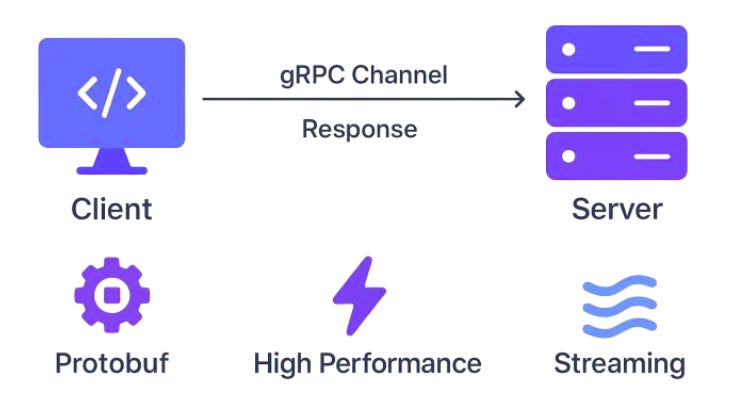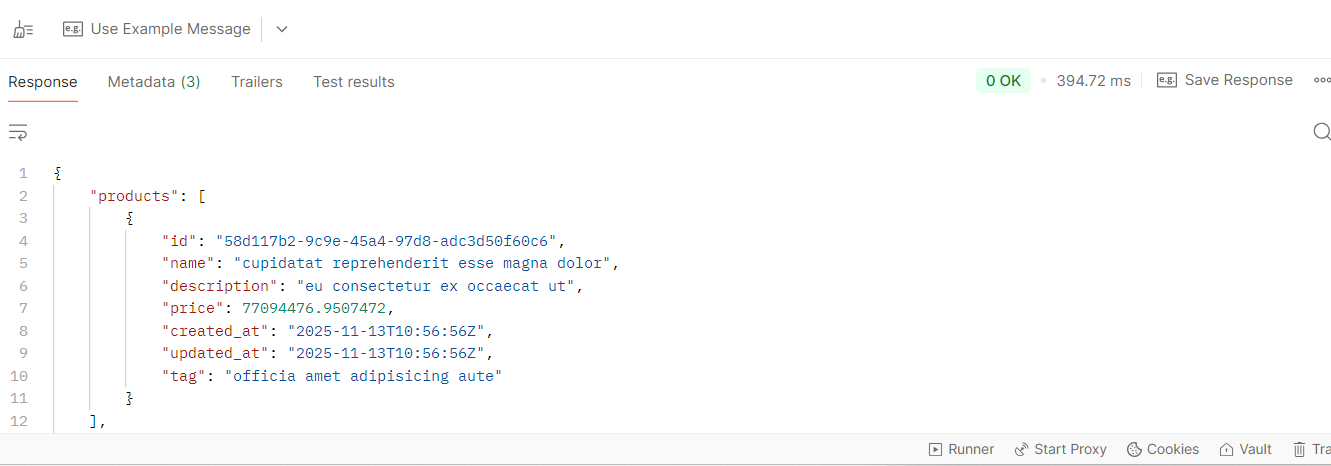Boost Your API Performance with gRPC in .NET Core
Discover how gRPC transforms API speed and efficiency in modern .NET Core applications. A practical guide to building ultra-fast, scalable, and reliable services.
As distributed systems grow more complex, traditional REST APIs often fall short in scenarios demanding low latency, real-time streaming, or high throughput communication.
What is gRPC?
gRPC (Google Remote Procedure Call) is a modern, open-source framework built on HTTP/2 and uses Protocol Buffers (protobuf) for serialization. Instead of sending verbose JSON payloads, protobuf creates compact, binary-encoded messages that are faster and smaller.
In simple words:
👉 REST = “Send me data”
👉 gRPC = “Call my function remotely, as if it existed locally”
🧠 Why gRPC in .NET Core?
Microsoft has deeply integrated gRPC support in .NET Core, offering developers:
✅ Strong type safety
✅ Contract-driven development
✅ First-class tooling support
✅ Auto-generated clients
This reduces boilerplate and ensures consistent communication between services.
⚡ gRPC vs REST (High-Level Differences)
gRPC shines when you need:
Microservice-to-microservice calls
Real-time streaming
High request frequency
Maximum performance
REST is still great for:
Public/external APIs
Simple CRUD operations
Browsers without gRPC support
They are not competitors — they serve different purposes.
Project Structure Overview
Our microservice uses some common building blocks:
Product Model — represents the domain entity
AppDbContext — EF Core database context
Proto Contract — gRPC messages & RPC definitions
ProductService — implementation of RPC endpoints
/GRPCSample
├── Data
├── Models
├── Services
├── Protos
└── Program.csThe Entity (Product)
Inside Models/Product.cs, we define the Product entity used by EF Core:
public class Product
{
public Guid Id { get; set; }
public required string Name { get; set; }
public required string Description { get; set; }
public decimal Price { get; set; }
public DateTime Created { get; set; }
public DateTime Updated { get; set; }
public string? Tags { get; set; }
}Couple of noteworthy things here:
requiredensures properties must be set.CreatedandUpdatedmanage timestamps.Tagsis optional.
Database Context Setup
Using Entity Framework Core, we define a context exposing the products table:
public class AppDbContext : DbContext
{
public AppDbContext(DbContextOptions<AppDbContext> options)
: base(options) {}
public DbSet<Product> Products => Set<Product>();
}This allows EF Core to map the Product entity automatically.
Defining gRPC Contracts With Protobuf
Inside product.proto, we define messages and service operations:
syntax = "proto3";
option csharp_namespace = "GRPCSample";
package product;
service ProductsServiceProto {
rpc CreateProduct(CreateProductRequest) returns (CreateProductResponse);
rpc GetProduct(GetProductRequest) returns (GetProductResponse);
rpc ListProduct(ListProductsRequest) returns (ListProductsResponse);
rpc UpdateProduct(UpdateProductRequest) returns (UpdateProductResponse);
rpc DeleteProduct(DeleteProductRequest) returns (DeleteProductResponse);
}
message ProductModel {
string id = 1;
string name = 2;
string description = 3;
double price = 4;
string created_at = 5;
string updated_at = 6;
string tag = 7;
}All communication between client and server is strongly typed and version-safe.
Registering the Proto in the Project File
<ItemGroup>
<Protobuf Include="Protos\product.proto" GrpcServices="Server" />
</ItemGroup>And reference the gRPC package:
<PackageReference Include="Grpc.AspNetCore" Version="2.71.0" />Implementing the Service Layer
public class ProductService : ProductsServiceProto.ProductsServiceProtoBaseCreate Product
public override async Task<CreateProductResponse> CreateProduct(CreateProductRequest request, ServerCallContext context)
{
var productItem = new Product { ... };
_dbContext.Products.Add(productItem);
await _dbContext.SaveChangesAsync();
}Get Product by ID
var product = await _dbContext.Products.FindAsync(productId);Update Product
existingProduct.Updated = DateTime.UtcNow;
await _dbContext.SaveChangesAsync();Delete Product
dbContext.Products.Remove(product);
await _dbContext.SaveChangesAsync();Mapping Entity → Proto Model
private static ProductModel MapToProductModel(Product product)
{
return new ProductModel
{
Id = product.Id.ToString(),
Name = product.Name,
...
};
}Creating and Running Migrations
Start by creating the initial migration:
dotnet ef migrations add InitialCreateApply the migration to create the database:
dotnet ef database updateTest gRPC Services with Postman
Create a New gRPC Request
Configure the gRPC Request Interface
Verify Successful Import
Test Create Product Request
Output:
🧁 What You Learned
By now, we’ve covered:
Creating Proto contracts
Generating gRPC server-side code
Implementing CRUD operations
Using EF Core for persistence
This template can easily evolve into:
Event-driven microservices
Inventory platforms
Catalog services
SaaS product management
🔥 Final Thoughts
gRPC isn’t here to replace REST.
Instead, it solves internal service communication where:
Low latency matters
High throughput is required
Contract safety reduces regressions
Combine this with streaming,
and gRPC becomes a serious toolkit for modern architectures.
💬 Are you using gRPC in production?
What’s the biggest benefit you’ve seen?
Comment below 👇
👉 Full working code available at:
🔗http://sourcecode.kanaiyakatarmal.com/GRPC
I hope you found this guide helpful and informative.
Thanks for reading!
If you enjoyed this article, feel free to share it and follow me for more practical, developer-friendly content like this.







